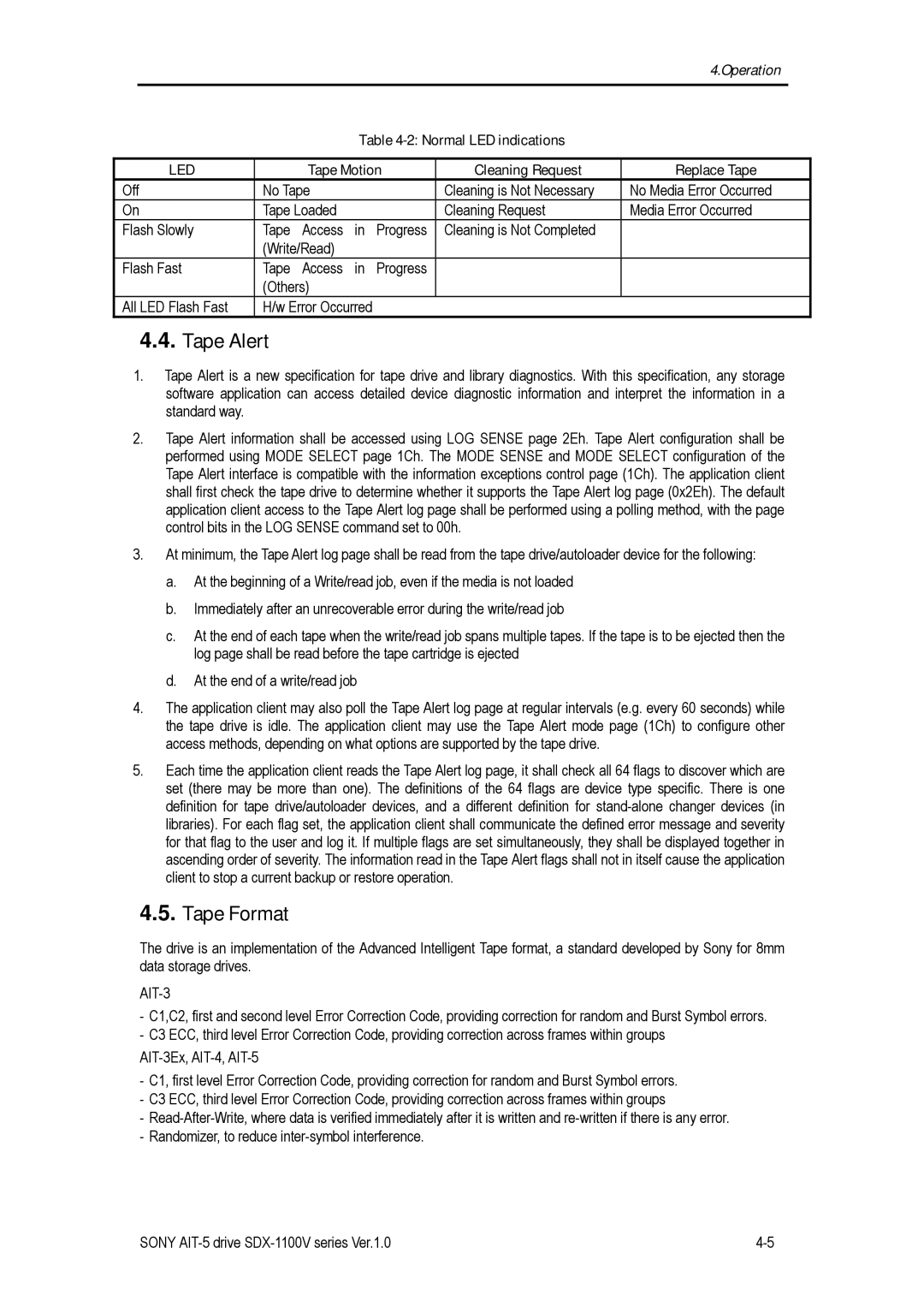
|
|
|
|
|
|
| 4.Operation |
|
|
|
|
| Table |
|
| ||
|
|
|
|
|
|
| ||
| LED |
| Tape Motion | Cleaning Request | Replace Tape |
| ||
Off | No Tape |
|
| Cleaning is Not Necessary | No Media Error Occurred |
| ||
On | Tape Loaded |
|
| Cleaning Request | Media Error Occurred |
| ||
Flash Slowly | Tape | Access | in | Progress | Cleaning is Not Completed |
|
| |
|
| (Write/Read) |
|
|
|
|
| |
Flash Fast | Tape | Access | in | Progress |
|
|
| |
|
| (Others) |
|
|
|
|
| |
All LED Flash Fast | H/w Error Occurred |
|
|
|
| |||
4.4.Tape Alert
1.Tape Alert is a new specification for tape drive and library diagnostics. With this specification, any storage software application can access detailed device diagnostic information and interpret the information in a standard way.
2.Tape Alert information shall be accessed using LOG SENSE page 2Eh. Tape Alert configuration shall be performed using MODE SELECT page 1Ch. The MODE SENSE and MODE SELECT configuration of the Tape Alert interface is compatible with the information exceptions control page (1Ch). The application client shall first check the tape drive to determine whether it supports the Tape Alert log page (0x2Eh). The default application client access to the Tape Alert log page shall be performed using a polling method, with the page control bits in the LOG SENSE command set to 00h.
3.At minimum, the Tape Alert log page shall be read from the tape drive/autoloader device for the following:
a.At the beginning of a Write/read job, even if the media is not loaded
b.Immediately after an unrecoverable error during the write/read job
c.At the end of each tape when the write/read job spans multiple tapes. If the tape is to be ejected then the log page shall be read before the tape cartridge is ejected
d.At the end of a write/read job
4.The application client may also poll the Tape Alert log page at regular intervals (e.g. every 60 seconds) while the tape drive is idle. The application client may use the Tape Alert mode page (1Ch) to configure other access methods, depending on what options are supported by the tape drive.
5.Each time the application client reads the Tape Alert log page, it shall check all 64 flags to discover which are set (there may be more than one). The definitions of the 64 flags are device type specific. There is one definition for tape drive/autoloader devices, and a different definition for
4.5.Tape Format
The drive is an implementation of the Advanced Intelligent Tape format, a standard developed by Sony for 8mm data storage drives.
AIT-3
-C1,C2, first and second level Error Correction Code, providing correction for random and Burst Symbol errors.
-C3 ECC, third level Error Correction Code, providing correction across frames within groups
-C1, first level Error Correction Code, providing correction for random and Burst Symbol errors.
-C3 ECC, third level Error Correction Code, providing correction across frames within groups
-
-Randomizer, to reduce
SONY |
